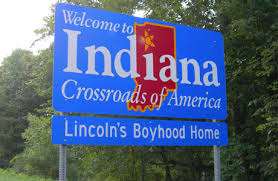 2/5/16–Addendum: I had struggled for quite some time with the name of my suggested model, as expounded in my post below, for lapping and overlapping of the myriad layers we have for identifying ourselves. I initially went with Layered Applied Diversity & Inclusion (LADI) model. However, one reader, Sarah B. Kent, suggested differently and I am truly grateful to her for her time and input in suggesting a better name and consequent acronym. After some pondering, I am amending the name of the model as per Sarah’s suggestion. It is now called, Diversity & Inclusion Applied in Layers (DIAL) model. I have made the required changes in my post below. It is still a working title, and if anyone else has any other suggestion, kindly send a personal message or post here as a comment. Once again, thank you to Sarah B. Kent for her suggestion. It take a village to develop anything, in this case a name and acronym, and I am thankful for any and all feedback that comes my way. Best wishes, Anita
2/5/16–Addendum: I had struggled for quite some time with the name of my suggested model, as expounded in my post below, for lapping and overlapping of the myriad layers we have for identifying ourselves. I initially went with Layered Applied Diversity & Inclusion (LADI) model. However, one reader, Sarah B. Kent, suggested differently and I am truly grateful to her for her time and input in suggesting a better name and consequent acronym. After some pondering, I am amending the name of the model as per Sarah’s suggestion. It is now called, Diversity & Inclusion Applied in Layers (DIAL) model. I have made the required changes in my post below. It is still a working title, and if anyone else has any other suggestion, kindly send a personal message or post here as a comment. Once again, thank you to Sarah B. Kent for her suggestion. It take a village to develop anything, in this case a name and acronym, and I am thankful for any and all feedback that comes my way. Best wishes, Anita
It is challenging to say anyone is monolithic or mono-dimensional. We describe ourselves in various ways; through race, national origin, gender, religion, color, orientation, disability, education, marital status, the children we have and so forth. Thus, we are multi-dimensional and have many layers of identities or ways to describe ourselves. Other individuals are the same. And we view them similarly, ascribing various characteristics and consequently behavior patterns that they might have or not. How tough it is, therefore, to understand diverse individuals and seek inclusiveness at work places! To better appreciate our many layers of identification, I have developed what I call, the Diversity & Inclusion Applied in Layers (DIAL) model. It’s always easier to understand things visually.
In the DIAL model, I am presenting a different take on the British mathematician John Venn’s diagram. Since our own identities are lapping and over lapping each other, some more pronounced at one time or another, thus such a visualization might help us in comprehending ourselves and others in the Diversity and Inclusion (D&I) paradigm. Imagine the complexity of one DIAL for ourselves interacting with so many other DIAL’s of individuals who too have many layered identities and ways to describe themselves. What a conundrum of Venn diagram lapping and overlapping! However, if we look at it visually and apply it at our work spaces, we will realize the challenges and beauties of diversity and inclusion, and this will help us to appreciate those different from us thereby leading to the possibility of real inclusion. Below is a generic DIAL model describing various diversities by which individuals can/do describe themselves and others. More circles with more categories can be added. After familiarization with this, one can create one for themselves as I have presented for myself, a personal DIAL, further below.
Now, if I were to describe the way I view myself or my identities (not all of them, but those I consider relevant for knowing myself) below are some ways I would do so. I am presenting below in variations of the Venn diagram.
Thus, I could describe myself as in figure 1, a free Venn diagram which I prefer the most, as no one identity is more important than the other as such, and all can lap and overlap with each other with minor increases and decreases at given times and circumstances.
Or, I could describe myself as in figure 2, in a stack Venn diagram projecting that identity or feature of mine I consider most important for me in the largest circle and the one which is the least, in the smallest circle.
Go ahead, try to visualize and draw out your identities/ways you describe yourself. Make your own DIAL using any of the above or below, or any other diagram/s that you can come up with showing the lapping and overlapping of your identities:
Now try to employ the same approach at your work place before judging someone or ascribing any characteristics based upon what is visible to us. And while working one-to-one with a colleague or in a team, remember how many descriptions or identities are trying to work with each other for the benefit of the organization, self and others!
There are other familiar models that assist us in understanding the many– primary and secondary ways– we describe ourselves. There is the Iceberg Theory, which originally came from Ernest Hemingway’s writing style focusing on surface elements which many critics said distanced him from his characters. This has been adapted in the D&I realm as the Waterline of Visibility, as in an iceberg, to show how we tend to look at what is visible to us and ignore that which is below the surface which actually might tell us more deeply about a person. For an image and more explanation, please check out on D&I consultant Brook Graham’s website at: http://www.brookgraham.com/WhatWeDo/Iceberg.aspx
And, then there is the Johari Window which divides our identities/characteristics in a window framework, into four sections: Open Area, Hidden Area, Blind Spot and the Unknown. It was created by two American psychologists, Joseph Luft (1916–2014) and Harrington Ingham (1914–1995) in 1955. It is a technique employed by people to better understand others and themselves, and how relationships work, with oneself and others. (http://www.amazon.com/Of-Human-Interaction-Johari-Model/dp/0874841984 )
We also have the Diversity Wheel, developed by Marilyn Loden and Judy Rosener to help people identify which social and other characteristics are more important to them and therefore placed in the center of the wheel, and those that are less important are placed in the outer circle. There are certain generic characteristics that most people would tend to place in the inner circle, however, there can be variations from individual to individual. For more details, check out, Workforce America! Managing Employee Diversity as a Vital (1991) and Implementing Diversity (1996). For an explanation of this, please see, Global Diversity Puts New Spin on Loden’s Diversity Wheel by Kimberley Lou & Barbara Dean at: http://www.loden.com/Web_Stuff/Articles_-_Videos_-_Survey/Entries/2010/9/3_Global_Diversity_Puts_New_Spin_on_Lodens_Diversity_Wheel.html
While all these models and others are extremely critical in our understanding of self and others, the DIAL model I am suggesting allows us to view ourselves not only from one lens, but numerous. And it can assist us in comprehending the concept of lapping and overlapping of identities of self and others, some more prominent at one time or another, due to circumstances, situations or the behavior/reactions of others thereby complicating D&I initiatives. I hope my DIAL model will be of use to you and your organizations in lessening those complications.
Thank you for stopping by to read my post. Much appreciated!
My other posts are available at: https://www.linkedin.com/today/author/64652618
Also, please visit my blog, www.diversitydiscover.blogspot.com for inspirational quotes and poems
And, follow me on Twitter at: diversitydiscov and on Instagram at: journita_quotespoemsanitanahal
Website: www.diversitydiscover.com
For lectures or workshops on unconscious bias, diversity and inclusion, please contact: anitanahal@yahoo.com or anitanahal@divesitydiscover.com
Have a blessed day!
By Dr. Anita Nahal, CDP


















